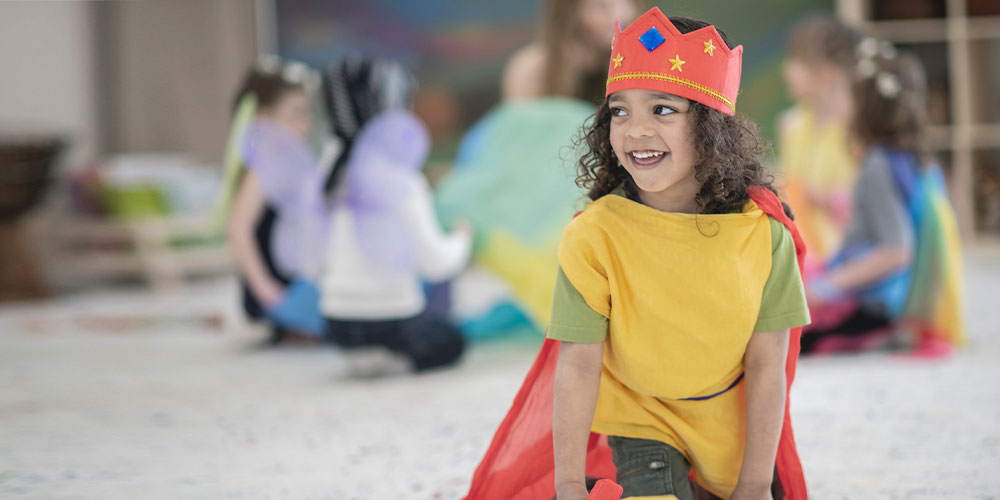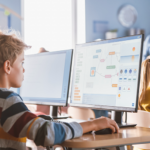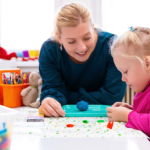Using a kinesthetic learning approach to teach history and social studies can have a huge impact on helping students visualize what happened in the past and understand what those events mean in the present.
Let’s get one thing out of the way first. It’s sheer ignorance to believe that teaching these subjects amounts to memorizing dates and state capitols. Sure, the ability to regurgitate this information is a small but important part of history and social studies. But really, the goal of these subjects hinges on continuing progress and learning from the past.
There’s one rock-solid methodology that is sure to support this robust learning outcome. But how does kinesthetic learning shed a brighter light on the choices, the triumphs, the mistakes, the struggles, and the ideas and innovations of the past? Check out these classroom activities to make historical facts and stories leap off the page.
The Benefits of Kinesthetic Learning
Given the essential nature of learning social studies and history, it’s important to grasp how the concepts jive with kinesthetic learning. Multiple studies point to how this learning style strengthens memory and retrieval while motivating students to unearth information. With these subjects, kinesthetic learning takes it a step further.
We’re all aware that history goes beyond knowing when the Magna Carta was signed. To that end, the rhyme about Columbus sailing the ocean blue leaves out some extremely pertinent information about that voyage. With a movement-based, hands-on approach, your students will:
- Increase their comprehension abilities, which will help them not only retain knowledge, but also expand on what it means in a contemporary context.
- Develop greater social skills in working with classmates on problem solving and team-based projects.
- Enhance their cognitive development in a way that creates a positive impact as they get older.
- Strengthen creative thinking and improve problem-solving prowess.
- Improve observational and data-recording skills, enabling them to make logical, evidence-based conclusions.
But what does this look like in practice?
History and Social Studies Activities for Kinesthetic Learning
Teaching History with P.E. Games
Sure, not every teacher has access to the gymnasium. But rest assured that each of these gym games are adaptable for the traditional classroom. The games you use to teach history can be as cheap and simple as paper-wad/trashcan basketball, or something more extensive, such as Gaga Ball or Star Wars Dodge Ball.
Here’s where history and social studies learning enters the equation. As kids score points or get eliminated, have that student recite a historical fact, discuss an event, or answer one of your predetermined questions. The friendly competition, partnered with the hands-on nature of the activity, is sure to enhance engagement in the material.
Teaching History with the Hamilton Cast Album
Lin Manuel-Miranda created perhaps the most iconic play since Shakespeare penned Macbeth in the early 17th century. Lucky for us, his musical provides a springboard for teaching history and social studies. There’s one pretty good reason for this: Manuel-Miranda took a number of poetic licenses with the story of America’s first Treasury Secretary.
Here are a few pertinent examples:
- Angelica Schuyler was married prior to meeting Alexander Hamilton, so the love triangle angle bears a lot less weight in real life than it does in the play.
- It’s true Alexander Hamilton opposed slavery, at least in the pages of writing he left behind. But the play leaves out the very relevant fact that the main character actually married into a wealthy, slave-owning family and favored the Three-Fifths Compromise.
- The duel wherein Secretary Hamilton falls to Aaron Burr’s bullet actually happened after a gubernatorial race. The gunfight did not occur after Hamilton refused to endorse Burr for president, as the play portends.
Reading and Acting Out Historical Plays
Arthur Miller never intended his audience to experience The Crucible during silent reading time. The author wanted his audience to see what happened to John Proctor, Tituba, and Giles Corey.
Why should the classroom be any different?
While stage plays usually only find their way into the ELA classroom, there is more than enough room to utilize historical drama in history and social studies. While authors often play fast and loose with inconvenient facts, there are nuggets of truth in just about every piece based on a historical figure. To that end, instead of having students read these scenes quietly, you can invite them to act out the parts. We’ll use Shakespeare as an example.
It’s true that most teachers can’t create elaborate stages and set pieces, but it’s more than possible to have kids participate in kinesthetic reading. It’s simply a matter of having students get up, move around, and perform the stage directions.
Here are a few simple ideas for using everyday classroom items as impromptu stage props:
- Use an apple or random trinket as a makeshift skull for the gravedigger scene in Hamlet.
- Use a water bottle to represent poison in the death scene in Romeo and Juliet.
- Use a desk as a makeshift cauldron for the prophecy scene in Macbeth.
Delivering Famous Speeches
So many pivotal moments happen behind a podium. The text of the world’s most touching, consoling, and action-inspiring speeches live on, and their content merits examination. Asking students to read these speeches aloud will push them to a new level of engagement, one that stretches beyond the mere understanding of content and context. In this exercise, kids will better understand the emotional weight of history’s turning points.
Some meaningful transcripts might include:
- Abraham Lincoln’s speech on slavery
- Carrie Chapman Catt’s speech on women’s suffrage
- John F. Kennedy’s speech on the space race
* Extra points if students dress up as the speaker. Can you really give an Abraham Lincoln speech without a stovepipe hat?
Creating Models and Inventions
The lightbulb had to start somewhere. The same goes for the first airplane, the first television, and the pet rock. Ask your students to consider the positive and negative outcomes a set of inventions brought about, then have them come up with their own invention.
Their finished project could be something that aims to create a more livable world, or an invention that saves lives. Or it could cover a practical concern or solve a minor annoyance. The possibilities stretch on and on.






